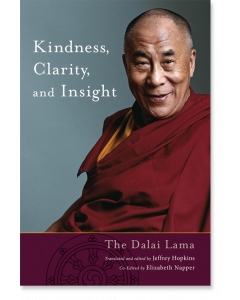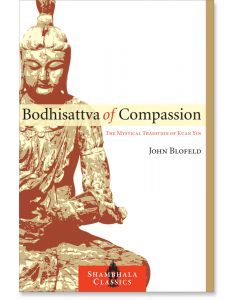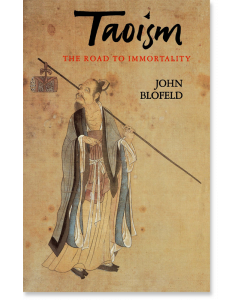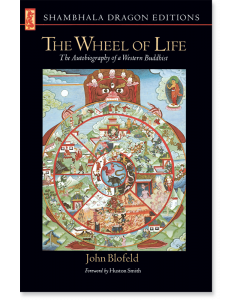John Blofeld
John Blofeld (1913–1987) was a world-renowned scholar and writer who devoted his life to the study of Eastern religion, especially Taoism and Buddhism.
John Blofeld
-
 Kindness, Clarity, and Insight$16.95- Paperback
Kindness, Clarity, and Insight$16.95- PaperbackBy H.H. the Fourteenth Dalai Lama
Edited by Jeffrey Hopkins
Translated by Jeffrey Hopkins
Edited by Elizabeth S. Napper
SNOW LION NEWSLETTER ARCHIVE
In Praise of Mahamudra: Takpo Tashi Namgyal
| The following article is from the Spring, 1988 issue of the Snow Lion Newsletter and is for historical reference only. You can see this in context of the original newsletter here. |
Note: A new translation of this work will be released in 2018.
Review by the Late John Blofeld
MAHAMUDRA: The Quintessence of Mind and Meditation, by Takpo Tashi Namgyal; translated by Lobsang R Lhalungpa (Boston, Shambala Publications, 1987; 488 pages, $25.00 paper).
John Blofeld wrote the following review in May, 1987, shortly before he passed away on June 17 at the age of 75. It first appeared in the Vajradhatu Sun and is available from Snow Lion.
I am now 75, riddled with some four or five maladies, mostly serious and often deadly, but not necessarily prone to finish off one in a very short time. The doctors have said I may leave the world at any momentor stay on for another year or so. Having lost . . . . (illegible) . . . . only a little each day; having lost 75 percent of my finger power, I write very slowly and with difficulty. But I am so struck by MAHAMUDRA that I felt impelled, after a mere cursory perusal to write a few humble words of praise and admiration. . .
The review follows:
Now, from the hands of one of Tibet's most gifted translators, we have a great treasure, a large and profound work of incalculable value. Readers to whom meditation is not very much more than a pleasant, beneficial pastime, might be daunted by its size, depth, and scholarly exposition. Those for whom correct meditation practice is of enormous importance should, at all costs, possess themselves a copy. To them it will prove a life-long and utterly reliable guide. By them I mean not only adepts engaged in mahamudra practice, but also those practising almost any of the various mainline forms of Buddhist meditationin particular the whole range of Tibetan and Ch'an (Zen) forms, yet certainly not excluding the widespread Theravadin forms.
However, as the learned translator rightly points out, possession of this great work is in itself not enough. Some means of approaching a lama qualified to expound it must be found, though perhaps not absolutely necessary at the outset. This is utterly essential for those intent on exploring the higher realms of meditation practice through which the book carries us, height beyond height, depth beyond depth.
In each section, the main development of the theme embodies numerous quotations from several learned works, often providing a wide choice of definition. For example, definitions of mahamudra include: the path of direct awakening through open reality; the path of knowing the existential foundation; the path of intrinsic reality. Essentially the whole teaching of the Buddha at every level has as its object direct perception of thatness (suchness), meaning the full awareness of the void nature of reality. Mali amudra is the path to this. The goal is perhaps far but the path is wide; hence the book provides us with a variety of practices at each stage. We learn that the voidness of reality is a notion going way beyond the void of total negation as determined by analysis of the phenomenon composed of atomic particles. As non-dwelling space encompasses everything and defies definition, so it is with ultimate reality. Therefore mahamudra is non-dual awareness that transcends the intellecttit is devoid of self-nature . . . . lucid and undefinable . . . . unstained, undefiled.
Besides such expositions of mahamudra, which meditators of many schools will recognize as identical with their own perhaps long-determined goal, the book provides a store of information on all aspects of practice, including: conduct, posture, prepatoiy practices; meditation on tranquil insight; overcoming hindrances (i.e., dullness); stages of practice leading to realization; consolidation of experience in meditation; guidance through tranquility and insight and the combining of these two. The book also covers the distinction between analytical and concentrative meditation; how to determine mind's nature and its characteristics; the sense of certainty that all thoughts and appearances are of mental origin; the importance of mindfulness; how and why to maintain the meditation even after gaining insight; and how to maintain absorption or maintain meditation through post-absorptive mindfulness!
Alas, what I have just said reads like a short list of items somewhat randomly selected from a very lengthy catalogueand so, in a sense it is. The book gives us the instructions on every possible aspect on the profounder types of meditation. Each page, each item, could be developed into a thesis, which is just the reason why the reader will find it necessary to have some or all of the most viol points expounded by a learned teacher.
In my humble opinion, just as the Avatamsaka Sutra seems to be the very apex of Buddhist teaching in sutra form, so may this book be the very apex of books available to us in the form of guides (though, alas, too profound for use as a mere handbook) to meditation. I am astounded by the learned translator's skill in putting this book before us in words so clear and easy for Buddhists to comprehend that, at first sight, we may be deluded into supposing the whole great matter to be relatively simple!
...



